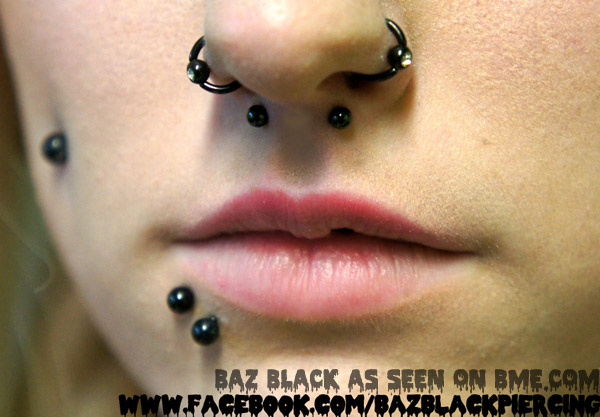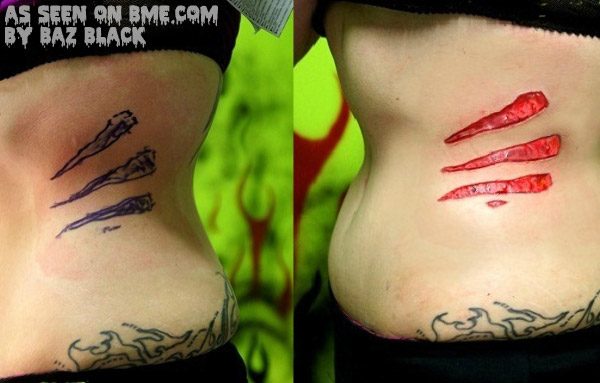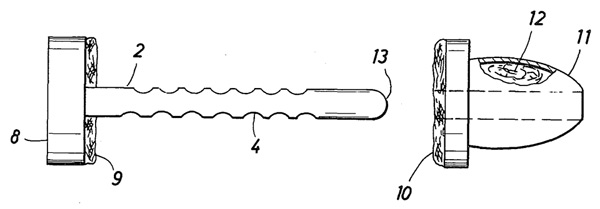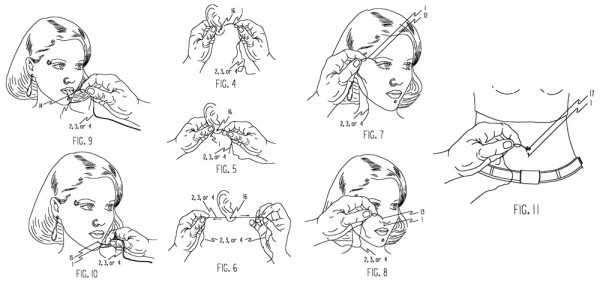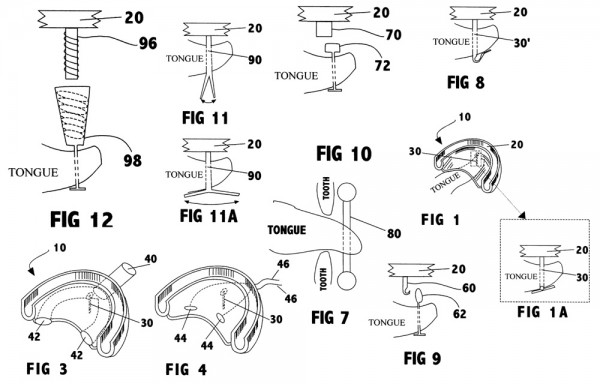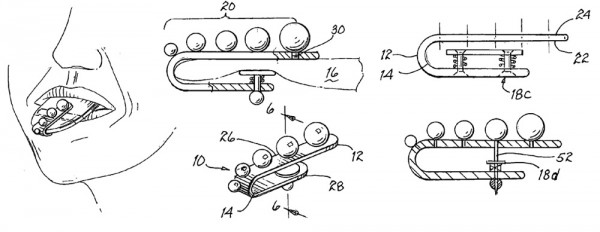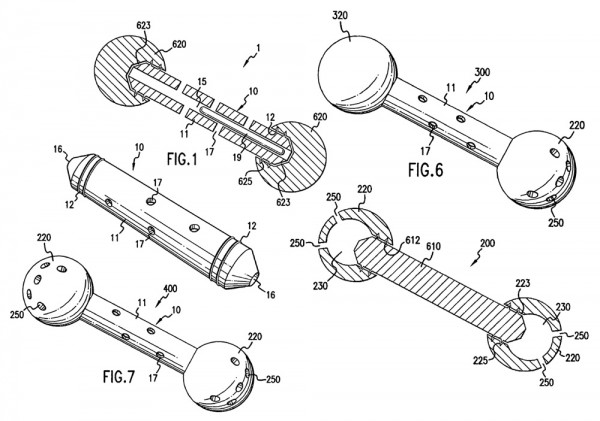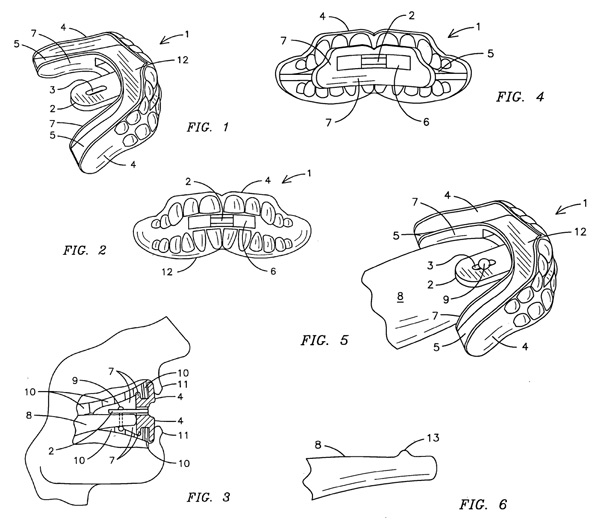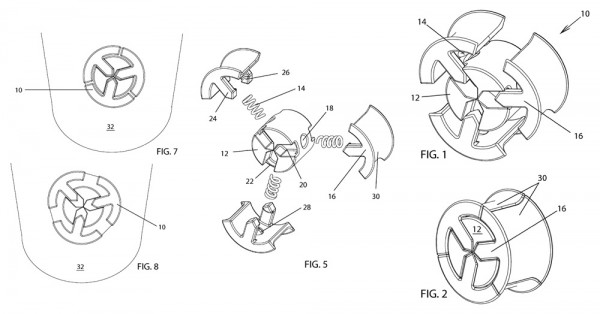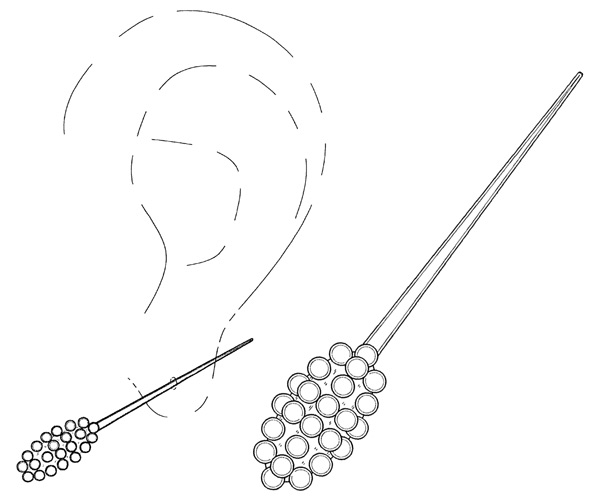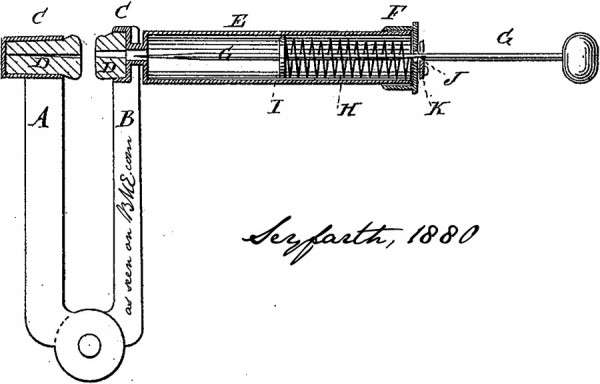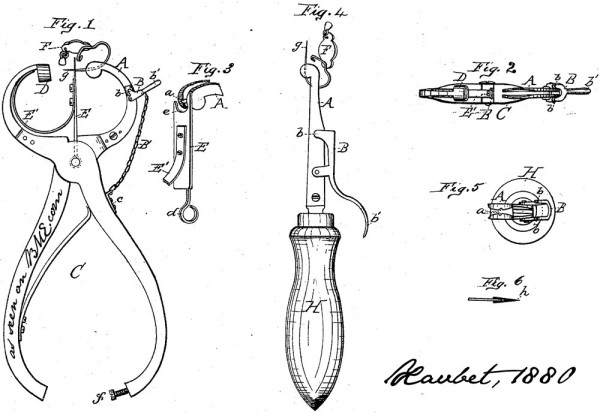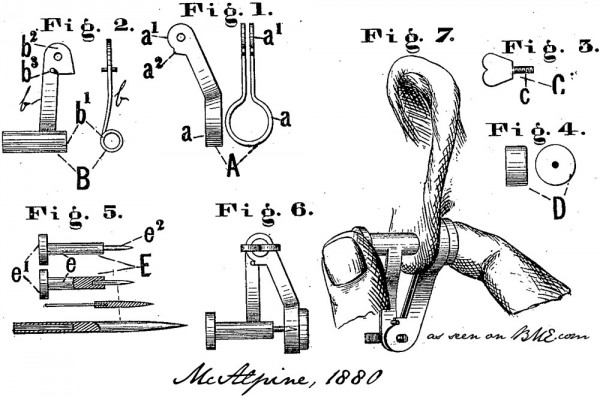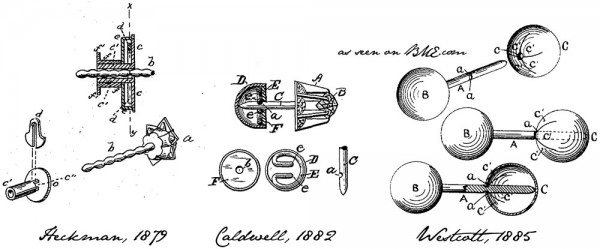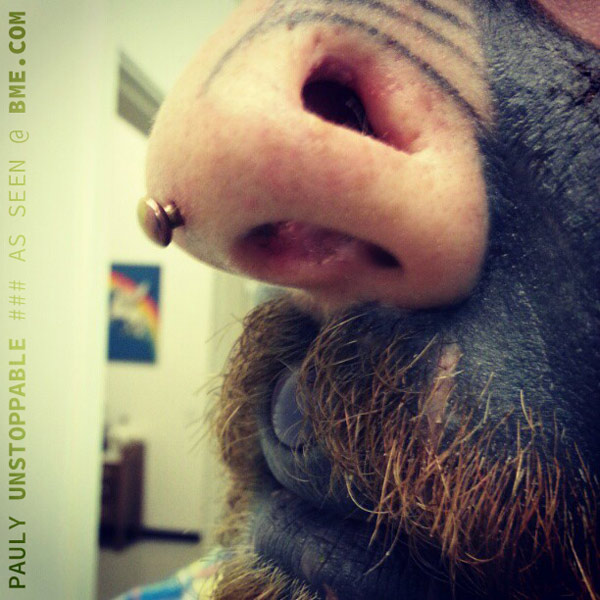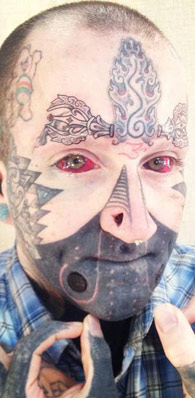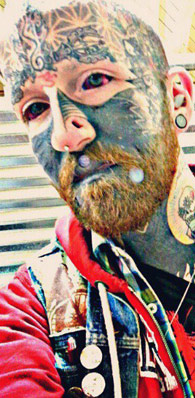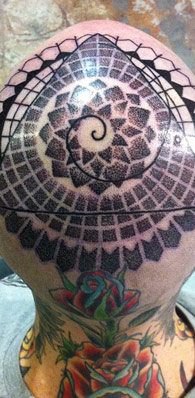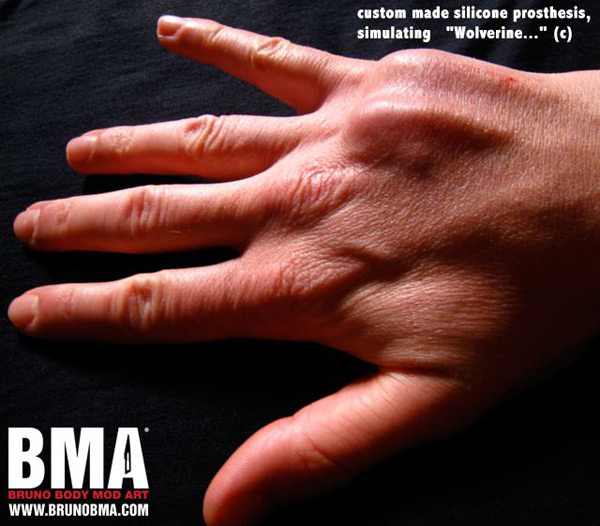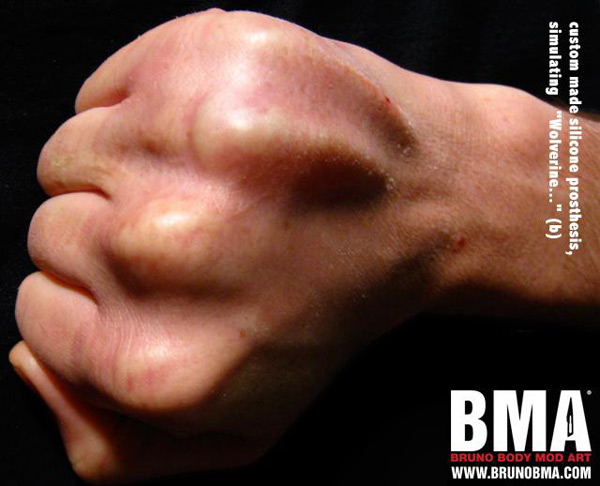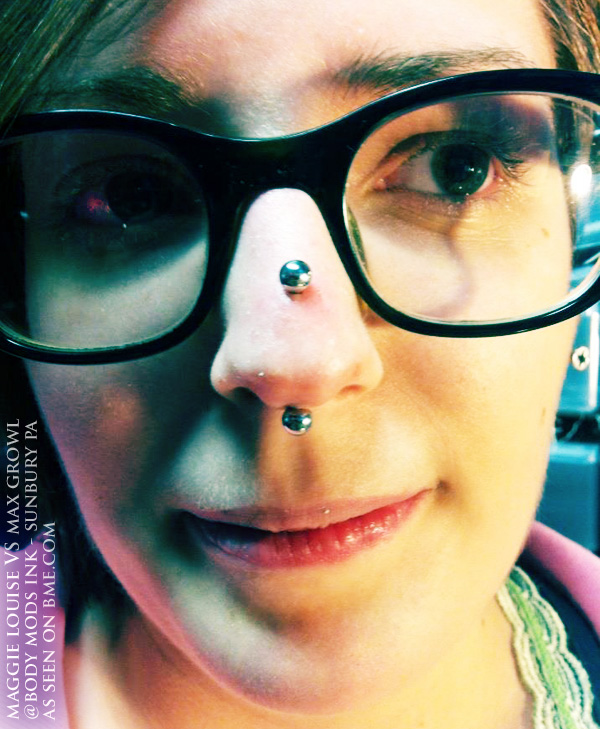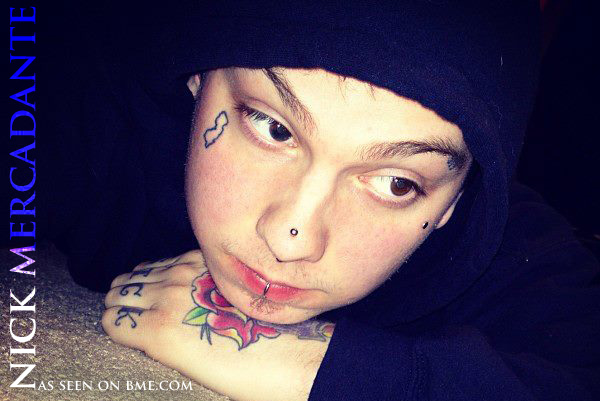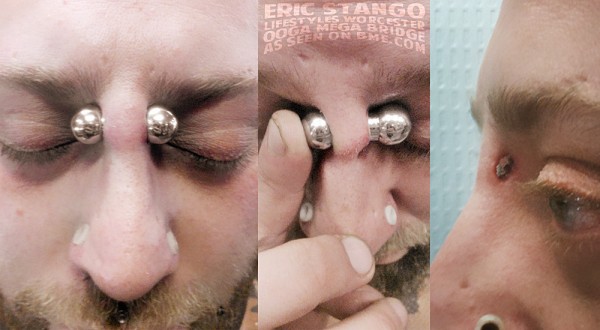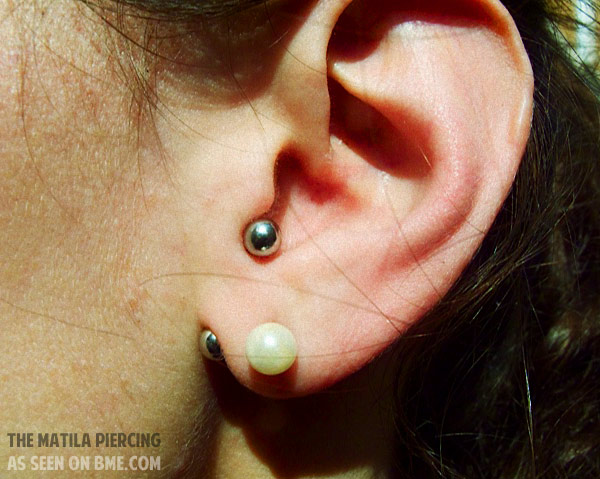I first met Tucson, Arizona-based Elio when he wrote me after I posted some pictures of saline inflation done using food color, and mused about the idea of using tattoo ink in order to dye large areas of tissue using a single injection and, done carefully, minimal pain. After he sent the fascinating results of his experiments with that technique, I started learning about his other modifications, all of them self-done and often bizarre and unique, a number of them things that no one else that I knew of had ever tried before. A number of these were made even more unique by the fact of Elio being born with female genitals which have been sculpted and enhanced not just with body modification but with hormones as part of a female-to-male gender transformation. It was a huge pleasure talking to Elio — it’s always liberating hearing the story of people who go their own way.
While the body modification community these days can be rather hostile to DIY modifications and explorations that are arguably better left to experienced professionals, because my body modification journey started in the 1980s when DIY was often the only option I have never been particularly bothered by people choosing that path up the mountain. It’s not the safest path for sure, and it’s not one that I’d recommend to most people — and for me to do so would be irresponsible given that there are safe and well marked trails up that mountain — but there are unique benefits (and dangers) to free climbing new routes or even those others have previously marked as dangerously impossible. I hope that those people who have difficulty appreciating the DIY journey, for whatever reason, will still read this interview with an open mind and accept that it is possible that there are many different valid ways to live, and that even if someone’s approach to life isn’t right for you, it may well be right for them and that by learning about journeys other than your own you can gain insights into the human experience that you wouldn’t have found otherwise. It was a great pleasure getting to know Elio, and I’m happy to share this interview, an excerpt from my upcoming book, here on BME.
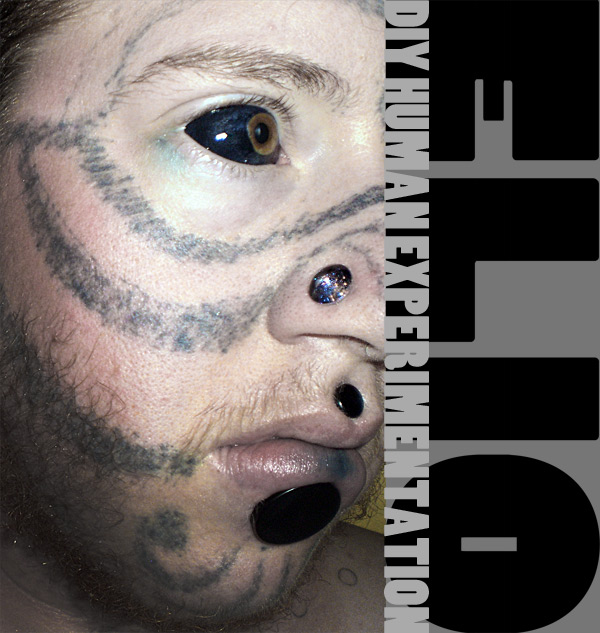
I’m twenty-six and I grew up in a very liberal, very smart, and very dysfunctional family in the San Francisco Bay Area. We — me, Mom, Dad, a younger sister and a younger brother — identified as nudist, and it was always understood that if one of us kids turned out to be gay that would be just fine. It turned out that trans, kinky, and modified were all a different matter, as I was to find out. At the same time, screaming at each other over dinner was normal, and I was constantly stressed out.
Professionally, I did tutoring for about eight years, but education was never really where I wanted to be, so I tried going back to school to switch gears into a Masters in biomedical engineering. My undergrad degree was in linguistics. Since I was sixteen — also the age at which I started college, though I don’t think these two things are related — I’d been getting migraine headaches that had been getting steadily worse. By my first semester of graduate school when I was twenty-four, I was getting them every day, leading to a major breakdown I still haven’t recovered from entirely two years later.
Since then, I’ve been applying — unsuccessfully, so far — for disability and trying to work on my writing. I wrote professionally for those silly eHow articles before that dried up, participated in National Novel Writing Month, and now I’m — slowly — working on a novel I hope will actually be publishable.
Are you still practicing nudism?
Not actively, no. I am known for not noticing I’m still unclothed at my BDSM club, though. I recall taking a break from a scene for everyone to go eat, only to learn there was an unspoken rule not covered in my orientation: “Don’t go in the food room or lobby naked.” However, I was saved when someone pointed out that I wasn’t naked — I was wearing socks! A few months later the council ruled that genitals must be covered in the food room, I think entirely because of me.
How did you realize that you didn’t quite fit into the gender you started in?
I like to say there are trans people who are more trans — the types who fought to do it even in the fifties and sixties when it was extremely hard — and there are trans people who are less trans. I’m in the latter category. Yeah, I fought against wearing dresses growing up, but because my family was so open in talking to us about sexuality, I never went around under the delusion that I’d never menstruate and would instead turn into a boy when I hit puberty. My mom has always gone on and on about what a bum deal being a woman is, so I figured I was experiencing what everyone born female experiences. When, upon being introduced to Lois McMasters Bujold’s work, I strongly identified with the hermaphrodite character, I just thought it was me being strange.
It wasn’t until I started spending a lot of time in the queer community and met some transmen that I started seriously considering transitioning. I originally got involved with the queer community because, having identified as bisexual for years and still feeling that something was wrong, I thought I’d try identifying as lesbian. That lasted about two weeks before I fell in love with a gay man. I now think I had assimilated the stereotypes about lesbians, and assumed that the reason I felt abnormally masculine for a woman was because I was really a lesbian.
I started living as a man mid-2009, came out to my family that Christmas — “ruining the holidays for everyone,” they called it — and started taking testosterone on St. Patrick’s Day 2010.
Where do you draw the nature vs. nurture line personally?
I think — and a couple family friends agree — that my mother’s negativity about women stems from not being comfortable as a woman herself. So that would seem to imply that her negativity is really just a manifestation of a genetic tendency toward being slightly trans, so I guess nature is your answer.
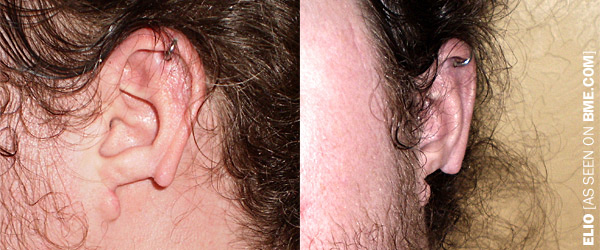
Elio’s left ear, showing his lobe removal.
What first got you interested in body modification in general?
I was always fascinated by people I saw with piercings or tattoos. I was about eight when a character in a book I was reading had three piercings in each lobe, and I thought that was just the wildest thing I’d ever heard of and wanted that for myself some day. As a compromise, I asked my mom if I could get just one extra piercing in a lobe — I thought I was being smart, arguing that I could put to use the stray earrings that had lost their mate.
But she said no, and I managed to repress my interest until I was fourteen when I pierced my nipple with a safety pin. To keep this a secret in spite of the fact that we considered it normal to change clothes in the same room with each other, I had to pretend I was embarrassed about my adolescent body, wearing bras I never really needed so I could keep them hidden.
When you start taking T, how quickly do you experience changes like clitoral enlargement and general masculinization?
I still can’t grow a decent beard after three years, though I suppose being fair-haired doesn’t help. On the other hand, a couple weeks after my first shot, I looked down at my clit and said, “Holy ****!”, because it had at least tripled in size. No one prepared me for that happening so quickly. Body hair came in slowly over the first year and a half, same with the fat redistribution away from the hips and into the belly.
Did going on testosterone change any of your body modification interests?
It might have made me more likely to act on my interests; I don’t really know. Then again, after starting transition, being interested in body modification was my last bastion of closeted-ness, and I think of my transition more as clearing the way for my biggest and most important coming-out — that is, living openly as a heavily modified person.
The world seems pretty mod-friendly these days, so why were you uncomfortable coming out about that?
My parents are very against it. I think it’s harder for female-bodied people — there’s such an incentive to keep your body “pristine.” I even had that sense for a long time; the thing that made me lose my iron grip of control on my interests was when I was left with appendectomy scars at fourteen. I figured that my body was no longer “perfect,” so why hold back any longer?
For sure — even in today’s age where piercings and tattoos and so on are very popular and accepted, it is very true that women are still expected to meet a very specific profile with their mods. As they say, the more things change, the more they stay the same…
At least I’ve never had anyone use the expression “ruining yourself” to me.
I also think the unfortunate fact that body modification is associated with criminality and drug life played into it. My family is a little subtly classist, even though we were only ever upper-middle class ourselves. I felt a lot of trepidation that people would assume I was a “lowlife” or “scum” if I talked openly about my interests. Sure enough, nowadays I do get people assuming I’m on heavy street drugs or have been to prison, but I just don’t care that much anymore.
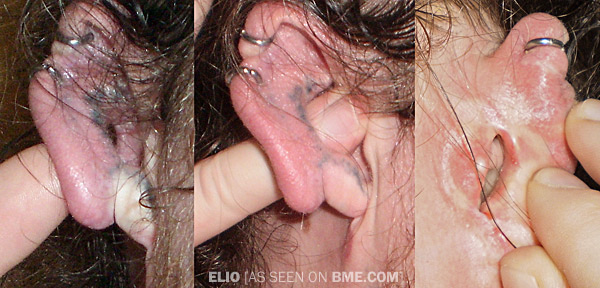
Elio’s right ear, showing tissue removal (both lobe and cartilage — conch and helix rim), piercings, and experimental tattooing.
I remember ages ago going to the premiere of the wonderful F2M documentary “You Don’t Know Dick” and it having a funny scene of people talking about how their sex drive kicked into high gear and became more “vulgar” to shorten what they said… I was curious if you’d experienced anything like that?
I feel like I keep accidentally failing to answer what you’re getting at about the T. Hopefully this time I’ll be more on the mark.
I’d always had a high sex drive, and that really didn’t change. The only thing that changed was that the swings were more drastic — rather than an almost constant low level of arousal, I went through a time where disinterest would suddenly spike to urgency in a way I hadn’t experienced before.
That’s funny given that there’s the stereotype of mood swings being more closely linked to female hormones than male.
Yeah, well, some stereotypes are bullshit.
As far as being more “vulgar,” I do find that I “get” dirty jokes and innuendos all of a sudden. It’s weird that I spent so many years constantly thinking about sex yet having the jokes sail right over my head. It’s like I’ve suddenly learned another language. Puns, too, are something I used to never get and accepted that was just the way I was. With T, suddenly I was not only getting them, I was finding them funny and making my own puns. I never expected this weird shift in my perception of language, because I’ve never heard anyone else talk about anything like it.
What modifications do you have now?
I’m sure to forget something, but I have many tattoos, mostly DIY hand-poked with various sizes of tattoo machine needles — face, eyes, neck, ear, forearms mostly sleeved, upper arms some coverage, hands, various front of torso pieces, nipples, clitoris — or “mini penis,” as I like to think of it — right leg significant coverage, and left leg some coverage. You’ll notice that one of the most-tattooed places on people — the back — is completely blank on me because (a) I can’t reach it, and (b) I can’t SEE it, so what would be the point? LOL.
Why do you mostly do your own tattoos?
It’s mostly a cost issue, but at the same time, most of my professionally done tattoos — there are only five — are based on designs I’d drawn. Once, I decided to get a piece of flash off the wall just to see what it felt like for contrast, and even though the work is stunning, I feel a certain detachment from it, a certain alien-ness. I have this bizarre sense that it’s a fake tattoo because it doesn’t feel connected to me the way the others do. So even if I were to get more money, I’d probably stick to coming up with my own designs.
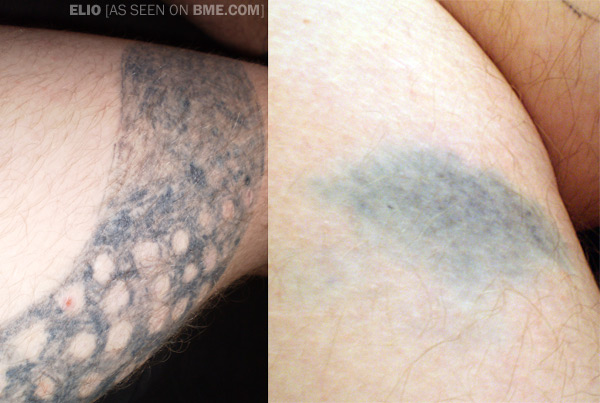
Some of the DIY tattooing Elio has done on himself. The blurry cloud of ink on the right was done using an injection method.
I totally get what you’re saying about your back by the way — I never had particular interest in a tattoo or body modification that I can’t see or experience… I do these things first and foremost for myself, not because I want to impress others.
It’s weird how people don’t believe me when I say I do it for myself. I’ve decided to accept that most people must make decisions about their appearances based on getting reactions from the outside world, since people so consistently expect that to be the motive for my behavior.
Honestly, I think that a world where it’s assumed people get modified for other people rather than themselves is a sad reflection on the popularization and gentrification of body modification.
When I first got into it, everyone was doing it for themselves, because they enjoyed it or got off on it on some level. There are still people like that, it sounds like you’re one of them, but I think that because mods are so public and so mainstream these days, they have the same “peer pressure” style influences on people are fashion or music and so on. It’s hard for people to do it for themselves these days because it’s now a part of shared society, rather than a private or at least outsider activity… In some ways I really miss the days when it was still punk or fetish and so on.
Nah, if I’d have lived back in those days, I would have become convinced I was crazy for wanting these things. My dad still thinks I’m not admitting that I have bipolar disorder and schizophrenia, and that if I’d continued to be on tons of psychiatric meds I’d never have modified myself to this extent. This completely ignores that I modified myself that whole entire three years, too, but he’s never been particularly open to reality when he’s made up his mind.
Anyway, as far as my piercings go, they’re all DIY, and I have a 23mm scalpeled labret, 8mm dermal punched philtrum, 9mm dermal punched nostrils, 6mm retired septum, three 14ga helix — through healed-over old 8mm dermal punches — 5mm scalpeled navel, 10mm stretched apadravya, and an 8mm retired scalpeled side of hood piercing.
I love that heavy clitoral apadravya piercing by the way.
Well, it may be “heavy” in the sense of “extreme,” but thanks to a Teflon barbell from Aesthetics, it’s actually very light! I wish I enjoyed weight there, as it’s a psychological turn-on, but my body doesn’t like it.
What do you mean your “body doesn’t like it”?
Weights are painful and cause sensitivity in a way that makes me slightly panicky rather than turned-on. It’s like sounding in that I’ve done it on myself for lack of anyone else to do it on, but eventually stopped that and made do with my imagination.
Are you trained as a piercer? What made you decide to go DIY?
I’ve never trained or worked as a piercer. I flub some things, but I’m happy with my success rate. Frankly, some of the most crooked, shallow piercings I’ve gotten are the professionally done ones. Added to the difficulty of finding someone qualified and willing to attempt some of these things and it’s just easier to do it myself.
I also think I have an advantage when working on myself in that I don’t have to use a clamp or receiving tube or cork — I can just put my finger on the other side and FEEL where the needle is going to come out. That, combined with the fact that I have no qualms about immediately redoing a piercing, means that I’m much more precise about placement. I also enjoy the ritualistic aspect of doing these things alone, in my own private space. Again, I just don’t get the same sense of ownership if I go out to a professional establishment and make a commercial exchange.
In addition to my piercings and tattooing, I have many surgical modifications, which are all DIY as well, other than my bilateral breast reduction which was done by a plastic surgeon. I have a split tongue, which I have redone at least six times to deal with regrowth. Also a right ear conch removal — that’s just partial until I go back and fix it. I had 1″ lobes in the past, both ears, which I attempted but failed to reverse. Eventually I intend to remove the leftover knobs of flesh and just be lobeless. I’ve done a quarter of this so far. My nipples were split both directions with a scalpel, cutting out from a pair from stretched horizontal and vertical piercings plus a central pocketing. I also have both labia removed, a hood split which I made by scalpeling out a 5mm piercing. Eventually I intend to remove the hood completely. Finally, I have a female subincision — I opened the split with a scalpel, starting with a female PA, a Princess Albertina, which I had stretched to ¾”.
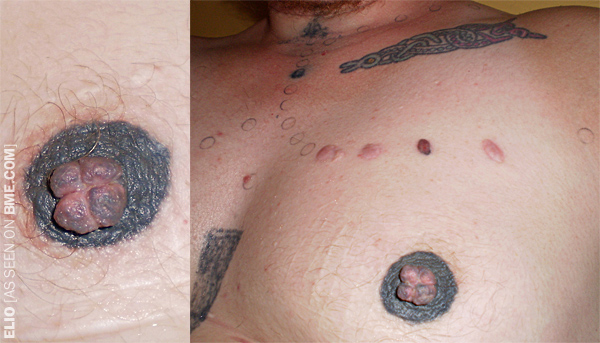
Elio’s chest showing (among other things) round ink-rubbings done using a dermal punch and tattooed split nipples.
Now we’re getting into fascinating territory — heavy female genitals mods seem so rare to begin with.
Why is that, anyway? I await the day when someone comes up with a plausible theory.
I personally think there is a strong link between male sexuality, male “mating dance behavior”, and testosterone in general with body modification of this specific type.
With your ¾” PA — do you mean placement, or stretched size?
Yes, the jewelry size. I pierced it at 10ga, I think, and it healed and stretched so fast I was up to 00g within a month. At ¾”, wearing a tunnel, I actually had this strange problem that it directed the urine stream backward and irritated the area that rubs between my thighs. Plus, I wasn’t sure I liked the way it stuck out of my vagina; it looked kind of silly, like a tongue or something. I’d never heard of a female subincision, so I decided to go ahead. The whole thing was practically painless, from piercing to split. Since then, I’ve noticed I do get a few more UTIs than I used to, but since I can reliably cure them by drinking a glass of cranberry juice at the onset, it’s not a big deal.
What made you want the PA? Were you into urethral stimulation?
I knew it was very rare and as far as I could tell, no one had stretched it to a significant degree. I wanted to find out what would happen and what it would look like… I wanted to be into urethral stimulation. As time goes on, I keep giving up on the idea of being a fifty-fifty switch and realizing I’d just rather do most of these things than have them done to me. But it’s really hard to find someone even into sounding, let alone cutting or what I ultimately want to do, which is modify someone else permanently as part of a scene, repeatedly.
It’s weird because the PA piercing sounds so extreme, but it was so easy, fast, and painless. I think I got onto the idea because I’m mentally turned on by sounding, enough so that even though it’s more uncomfortable than pleasurable for me to receive, I’d been playing around with it on myself for a while.
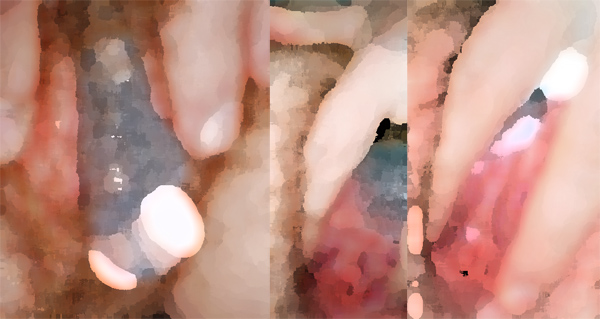
Elio’s genital mods: On the left, his stretched clit piercing and hood tattooing, and on the right, his “female subincision” created by cutting out a stretched Princess Albertina piercing. Click to see uncensored.
How does your subincision run anatomically?
The distal end of my urethra is open to my vagina.
What procedure did you use to do it?
I just cut through the piercing. I’d just stretched up a couple days before., so the stretched parts hanging off the opening kind of tightened up afterwards, which was nice. I’ve had that happen before — after having my retired 00ga helix punches healed down to open 2ga and 4ga holes, I stretched back up to 0ga and retired them again — only this time the holes healed right over. I think that’s a good thing to try if you’re trying to shrink a stretched piercing — stretching up and then removing the jewelry after a couple days with the stretch not healed yet.
How about healing?
It barely bled at all, there was no pain beyond an extremely mild stinging when peeing for a day or two, and there were no complications. Easy-peasy.
Did it have a functional effect?
Whereas sounding is painful for me on removal, I like stimulation around the urethral opening. The subincision enhanced that sensation when receiving vaginal penetration, which I enjoyed a great deal back when I was doing a lot of that.
It’s hard for me to understand the length of the subincision exactly in terms of how far it runs. It just mostly just cutting out the big PA, or does it run up the shaft of the clitoris, thus exposing more nerves? I guess at that point the anatomical parallels start to diverge a bit.
Yes, they do, because the clitoris is a pretty separate entity from the urethra. Okay, so imagine you have a soup can and you glue a straw that’s the same height as the soup can to its inside, standing up vertically. That’s like the vagina and the urethra. If you cut a slit in the top end of the straw, that’s essentially what my subincision is like. And then if you really stretch the metaphor and get one of those little hot dogs people use for pigs-in-a-blanket and set it on the counter nearby, that’s my enlarged clit.
The subincision is just basically me cutting out the large piercing. Since the piercing protruded a bit, I’d guess the subincision goes in maybe 12mm. Considering the female urethra is only like 6 or 7cm long, though, that’s not an inconsiderable percentage.
Another interest of mine is scarification, some done with a dermal punch, and some of it with a punch and ink-rubbing. I’ve never seen anyone else do that yet, but it’s such an obvious idea.
Was your tongue split done over six sessions because you were just cutting slowly?
No, actually. The first time I got it pretty far back, but every time it healed, it returned to an unsatisfactorily short split. Realizing this was partially because I was having trouble getting the scalpel far enough back in my small mouth, the last time I used surgical scissors, and that seems to have worked a little bit better.
The first time I did it, I was actually just playing around with large-gauge temporary tongue piercings. I was nineteen and living with my mom, and I wasn’t allowed to have non-ear piercings at all, so I played with these things late at night and took them out right away. I’d been mostly piercing and stretching — that is, ripping — to larger sizes, but I knew scalpeling was supposed to be cleaner and result in easier healing. But once I’d pushed the scalpel — okay, actually it was an Xacto craft knife that time — through my tongue, the blade was facing forward as I had it, and I was on such a high from the sight of it that I kept cutting all the way. That still wasn’t enough to satisfy my need, though, so I risked pissing off my mom even further by also cutting my 00ga lobes to 5/8″. I thought I’d be able to hide these things — I had long hair — but I was wrong.
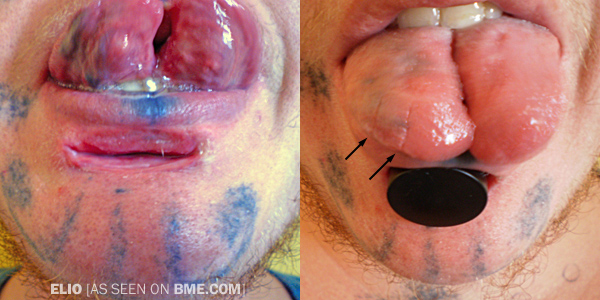
Elio’s tongue splitting — note scars from attempted “octopus tongue” as well as his injection tattooing of the lip and tongue.
Did cutting and re-cutting it like that affect the way it healed? More scar tissue or an unevenness or anything? I assume you weren’t suturing it.
Yeah, I wasn’t suturing it. I knew some professionals weren’t using sutures, either, so it didn’t seem worth the trouble to get the materials and learn how to do it. I don’t think it affected healing at all. Whereas it still could be deeper, I’m very pleased with it aesthetically.
Oh, that reminds me, I should have mentioned — somewhere in the tongue-splitting FAQ it warns that a three- or four-way split would “likely end in disaster.” Well, I tried going in about half an inch on one of the existing forks just to see what would happen — I didn’t think there would be a terribly great “disaster” just with that short split. You can see from the pics that you can’t even tell it’s there, really. I didn’t like it at all — unlike the original split, it didn’t feel natural, and it wasn’t the turn on I expected. The outside part of the split went kind of numb. For what it’s worth, I was able to pull it apart with my muscles; it wasn’t just a passive lump of flesh. But it healed back together quite quickly, and that was the end of that experiment.
It’s sounding like DIY is something that’s very important to you. Does that permeate other aspects of your life as well?
Haha, yes. I’m very bad about asking for help when I need it. That combination of stoicism, independence, and stubbornness ends up hurting me a lot, as you might imagine. If I hadn’t kept insisting I could do it just to prove it to myself, I would never have tried to work normally for as long as I did before finally admitting that my migraines are too big an obstacle.
You seem to really enjoy using yourself as an experiment.
It’s less enjoyable than compelling. It’s similar to all my creative ventures in that way — it’s not “fun” per se, but it’s something I find so interesting I can’t not do it.
Given the warning you’d read why did you do it?
I’m a little mulish when it comes to warnings. “Oh, you’re telling me not to do this? Well I don’t have to listen to that! Watch me do it anyway and turn out fine!” If I read a warning somewhere that it’s a really bad idea to impale your entire body on a 20cm wide spike, I’d probably have a great deal of trouble getting the idea out of my mind. I wouldn’t do it, but I’d keep returning to the thought.
When you did the “octopus tongue”, for lack of a better name, do you have an sense as to how that would have turned out if you’d forced it to heal, say by suturing it?
Haha, “octopus tongue” is a perfect name for it — even though octopuses probably don’t have tongues. I think it would have just have continued to be numb and awkward-feeling. It feels fine now that it’s healed back together. There’s a little strip of scar tissue I can feel if I try, but that’s it.
What made you decide to do the labial removal and hood removal? Was that related to trans interests, or mod interests?
Both. I can’t really separate it out. I always hated my labia; they didn’t enjoy being touched, and I found them ugly. I was always attracted to the idea of having the area clean of superfluous folds and having nothing but the clit there.
Do you mind me asking about you sex interests in general, or is that no-go territory? I’m also curious about whether testosterone has influenced them.
I’m pretty open about my sex interests. I think it’s important for kinky people who CAN be out to do so to increase visibility.
The first year on T, I had copious amounts of sex with a veritable plethora of partners — mostly gay, bearish men, but some straight men were still interested for a while, and if there was BDSM involved and there were no guys around, I could go for women, too. I’d been enjoying slutting around for a couple years before T, though, so I think it was only maybe a 50% increase in activity. I did, however, go from virtually never masturbating to doing so about twice a day — almost always with a vibrator for efficiency, even though it seems like a kind of womanly way to get off.
Then, when I had the aforementioned breakdown, my sex drive kind of shut down for a while, except for masturbation. That time period was when I finally committed to being irreversibly visibly modified. I realized that I’d always had a conflict between being a performer and being modified, and that every single stinking time, I’d chosen the former over the latter. It was time to make the other choice. Besides, I’d discovered improv comedy, where your looks are pretty irrelevant, and I’d turned into a gamer — where your looks are REALLY irrelevant — when my sister introduced me to Magic: The Gathering. Anyway, the weird thing is that now that I can look in the mirror without being startled by my lack of modifications, and I really don’t care to have sex with other people any more. Being able to just cater to my fetish made masturbation that much more satisfying. My modification motivations are 40% fetish, 35% a matter of be-who-you-are, 15% love of experimentation, and 10% spiritual.
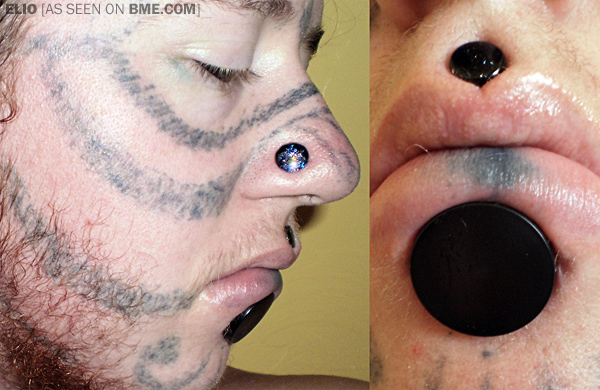
Elio’s self-done facial tattooing (note lip tattoo).
What gave you the idea of doing tattoos by injecting the ink instead of just tattooing it?
The idea began because I was trying to accomplish something that would be more like an implant than anything. I wanted to have bumps filled with color on my leg, and, being a cheap bastard, I tried this with acrylic paint, figuring that at least it’s non-toxic.
I guess you discovered there’s a big difference between “non-toxic” and “bio-compatible”!
I knew there was; I just wanted to make sure I didn’t go crazy from lead poisoning while experimenting. I’ve also always been comfortable with mods “going wrong” — I enjoy the strange scars and configurations that result from accidents as much as the successful mods. I figured one of three things were likely to happen: it would work, it would push back out of the skin and scar, or it’d become infected and painful and I’d have to debride it myself. I was comfortable with any of those three options, and could at least tolerate the possibility of having to seek professional medical care. The green and yellow ink stayed, but the other four colors all pushed back out in a long, painful process.
Long painful process?
It took months with the paint weeping back out the injection site or forming new holes to the surface. I’m a picker — I can’t seem to help it — so eventually I hastened the process by picking away the skin that was on its way out anyway, leaving me with irregular craters in my skin there. I kind of like the result, as it’s hard to get a depressed scar like that except by sticking something non-bio-compatible in there. I did have a rash of mild food allergies for a couple years afterward, and someone I knew said that was linked to tattoos in general, so maybe the yellow and green weren’t completely inert. Anyway, now my body seems to have successfully encapsulated them, and they’ve given me no trouble. Some of the green did weep a bit, which is why there’s a white spot in the middle of those areas, like a collapsed caldera.
Later, I moved toward injected ink that I hoped would to spread out. When I did my eyes — yes, I saw the idea on the internet — I noticed how the fact that there isn’t really any tissue that bonds the conjunctiva to the sclera, or any tight fibers running vertically that would stop the ink from spreading. In addition to the eye, I’d seen a photograph on ModBlog awhile back where a guy injected his own blood under the skin of his penis and got a cool, color-changing temporary tattoo. The two ideas just sort of melded in my mind, and I injected black tattoo ink under the loose shaft skin of my tiny penis.
Just that spread out really well and covered everything but the underside, where the tissue is a lot tighter. It’s very similar to the inside of a subincision there, which makes anatomical sense. I was really impressed with this, so I tried putting some ink in the head as well, which just came out like random black blobs even after three or four attempts.
As I played with this more on different parts of the body, I realized the shallow injections just under the skin don’t work very well unless the skin is very loose. The process hurts like hell wherever you do it, and the ink just doesn’t spread out enough most places to justify using the technique over normal tattooing. However, the one time I managed to get the ink into the fat underneath and it spread — this only worked the first time, so far — I got an interesting, result kind of like a permanent bruise. I just wish I could get colors other than black to work that way, as I think it’d be neat to extend the idea into a rainbow thigh piece.
Healing isn’t too bad with this, though the swelling on top of the pressure created by the ink itself is more painful than you’d expect. Honestly, I’ve never gotten a serious infection with any mod I’ve done. I don’t even really bother with sterility unless I’m doing something extreme, as (a) I’m lazy about prep work, and (b) I look at all the indigenous cultures that do these things on the ground in the dirt with completely inappropriate materials — yet you never see them with ripped piercings or other failed mods. True, some of them probably die from infection, but if I ever got a serious infection, at least I have access to antibiotics.
I said something similar in one of my old FAQs — if the piercing can be done in a dirty environment using simple homemade tools, it’s probably relatively low risk. You do however occasionally see indigenous people with torn earlobes and such of course…
I’ve actually yet to run across an image of that, though I always figured it must happen. In general, I think our bodies are much more durable than we give them credit for. I’ve always figured that if I were a piercer, I’d be slowly driven nuts by people being overly anxious about mild mods.
By the way, I’m always impressed when people tattoo their own eyes, and I think there’s a kind of nihilism to it as well…
Nihilism? I don’t know about that… I think I’m too happy to be a nihilist.
I know, but I think with eye tattoos, other than people who are blissfully unaware of risks, you have to have a certain moment of “fuck it, if I go blind, I go blind”… It may have been a little different for me because I was the first to do it, so we were much more in the dark about what might occur.
It was more like, “I’ve yet to hear of anyone going blind; that may just be an overreaction of a warning. Plus, if I do go blind, it would be a whole new way of living life. Sure, it’d be frustrating and disheartening at first, but it would also be a challenge and an adventure.” Since then, I’ve learned that studies show people who lose a limb involuntarily are less happy than they were for about a year, but after that they go back to being just as happy — or unhappy — as they were before. That’s made me a lot less anxious about the potential of getting in a bad car wreck, which I worry about a lot more than I worry about any ill effects of my mods.
What was that experience like? Did you do full coverage or just a spot?
Full coverage. I did the right eye, two or three injections, and it was easy and looked gorgeous. Then I did the left eye… aieee! Why is one side always so much harder than the other in bilateral mods? I absolutely couldn’t get part of it to fill in — still haven’t, after multiple revisits — and healing on that side featured my sclera kind of detaching in a fluid-filled blister — which I popped with a sterile needle — blurred vision, a headache so bad I thought I was having an aneurysm and went to the ER, and black “floaters” in my vision for a year afterward.
My optometrist has since informed me that there’s ink on my left optic nerve, making me at risk for glaucoma because the ink molecules, like the melanin molecules in dark-skinned people, can block the flow of fluid out the fine mesh in the retina. Oh well.
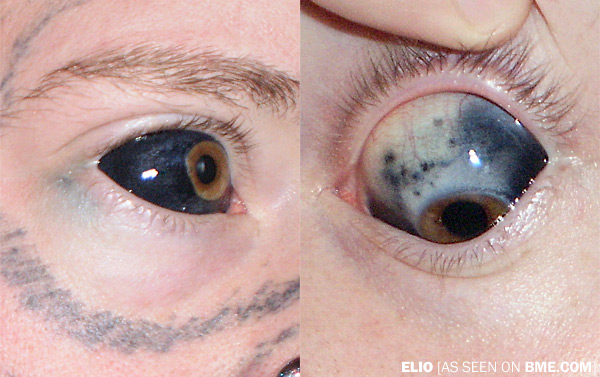
Elio’s DIY eyeball tattoos, one eye with full coverage, while the other eye had trouble fully accepting the ink injections.
Can you tell me more about the problems you had?
I used an 18ga draw needle on a 3cc syringe to draw up about 1cc of black tattoo ink directly from the bottle — to avoid contaminants from involving extra containers — I switched to a 25ga needle to inject the ink. I put the needle in open side down. I wasn’t sure the needle was in far enough at first, but when I tried depressing the plunger, the ink went right in and spread out over about 40% of my right eye. I repeated this with similar results twice on the right eye and twice on the left eye.
The other twenty percent of the left eye refused to take ink. I tried injecting shallower, deeper, in different locations, but after about six times, I gave up. It had black spots where the needle had been, but the ink wouldn’t spread out. I later repeated the procedure on multiple occasions with similar lack of results.
My right eye produced no pain and healed fine except for minor leakage into the area around the eye, giving me the “black eye” effect over about a square centimeter. I was a little light-sensitive the first week of healing. Two days after the initial procedure, my left eye… how do I describe it? It’s like the whole sclera detached and was kind of floating free in the eye socket, though tied down to the cornea still. It was also swollen like a blister. Once I lanced the blister with a 25ga needle, clear fluid leaked out, and the sclera went back to normal, though still very loose and jelly-like. Over the next two or three days, that healed back to normal.
Meanwhile, day three I got that monster headache I mentioned. At the hospital, I was keeping my eyes shut or squinted because of the light sensitivity, so they never knew about the eyeball tattoos. They said it was just a particularly bad migraine, which is what I thought, too, for a long time until I kind of reassessed what had happened. The headache was tolerable with aspirin the next day. As far a the glaucoma risk, I don’t know much more about it than what I already told you. The “floaters” were teeny black specks that tumbled down through my vision for a year afterward, but since have disappeared — I assume they eventually collected back on the optic nerve as the eye filtered out that fluid.
Do you feel that there is a male bias in body modification in general? Or in heavy modification?
I’m not sure it’s a matter of “feel” on this one — someone must have studied this at least to the extent of counting up the number of men and women in body modification, and I’m sure it would come out biased toward men.
How do you think this could be addressed or corrected — or do you think it will always be that way because it’s reflective not just of societal pressure, but of legitimate differences in the way genders express themselves?
We haven’t exactly talked about it from a community angle yet. I don’t know if it’s something that needs to be “corrected”, or that we’d get a 48-52 split in the absence of societal pressures, but when an activity is this men-dominated — I’d guess 90-10 in heavy modification — I have to think it’s more about cultural norms than anything innate. Men and women just aren’t that different; we’re all people.
If the ratio does change, I think it will just take time. It’s popular to say that women stay away from men-dominated activities because men are jerks toward them when they try to get involved, but that’s always struck me as a rather pat explanation. Anyway, writing a finger-wagging “Men, you’re being bad!” isn’t really helpful, because any man who actually is a jerk isn’t going to think you’re talking about him.
For people who are ignorant to trans-culture, I think it might be worth explaining “what’s the point” of becoming a transman and having a relationship with a gay man… I mean, why not just be a straight woman with a straight man? What’s the difference?
If there’s anywhere you don’t want to pretend to be someone else, it’s in your intimate relationships. I was very uncomfortable with straight and even bi men needing to see me as a woman to be sexual with me, because I knew “woman” was the one thing I wasn’t. It’s really hard to have people perceive you as you are over a dinner conversation, but then to have that go out the window as soon as you’re naked.
Do you ever wonder if it would have just been easier to “pretend to be normal”? Be a housewife with a white picket fence and two and a half kids or something? As wonderful an adventure you’re on, it can’t be easy on many levels.
The trope of the mad housewife makes me want to laugh and cry simultaneously whenever I see it, because I think that would have been me in another time. I’ve been relatively spineless about standing up for who I am even now, so if I had been born in an era when it was harder, I probably would have lived a life of secrecy, shame, and deep malcontent with my “normal” life.
I know that at 26 you’re still coming to terms with your own life, but since there may be numerous people going through the same thing, but teenagers that may be ten years earlier in their personal journey, is there any advice you’d give to a younger version of yourself? Be it about the body modification journey or about the trans journey…
Don’t doubt yourself. When people say something’s “just a phase,” they’re often putting their wishful thinking onto you. Don’t listen to that nonsense if your gut says otherwise. Also, it does get better, but it takes longer than you’d think possible, and it gets better in unpredictable ways, along axes you weren’t even aware existed.
I wonder if anyone will ever start an “It Gets Better” project for modified youth the way there’s one for queer youth?
* * *
This interview easily ranks as one of the favorite interviews that I’ve done in my time covering the body modification subculture. If you would like to get in contact with Elio, you can do so by email at [email protected], and if you enjoyed this interview I highly recommend my earlier conversation about body modification and gender issues with Ashley Crawford. Finally, as I said in the introduction, I should mention that this interview is an excerpt from my upcoming book on private body modification practices, which will be available within the next couple weeks. Information on that will be posted when I have it but not before, so please don’t ask me in the forum on this interview.

